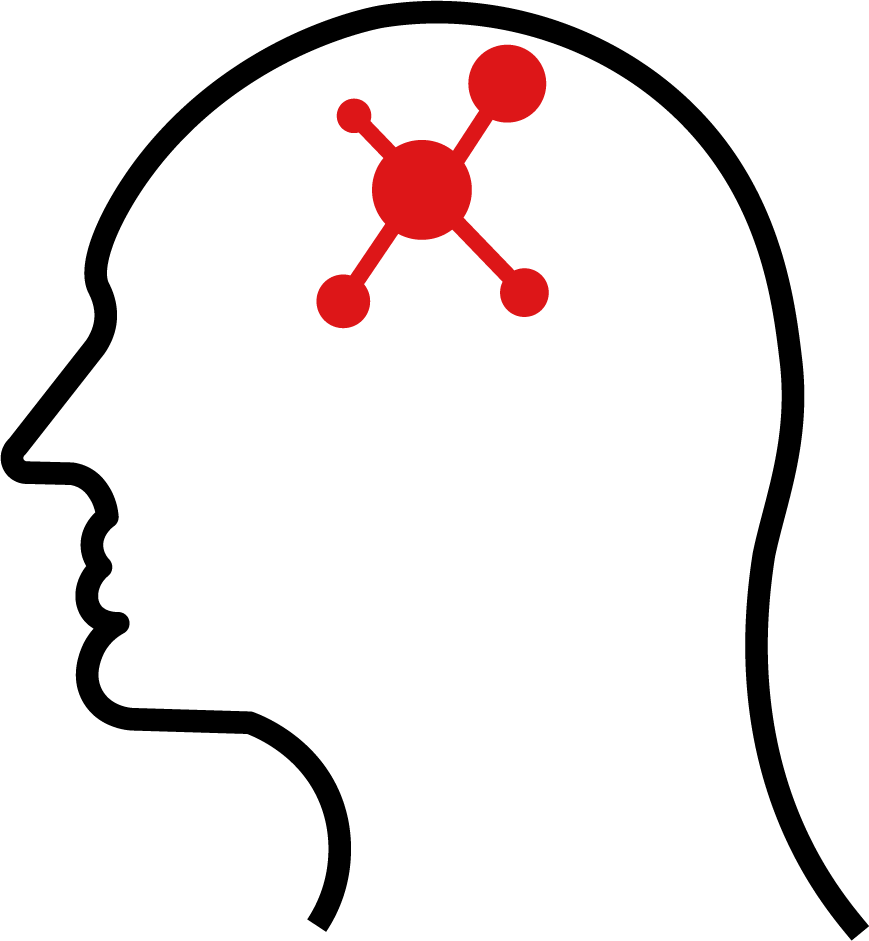
In the bustling rhythm of modern life, where every moment counts, the challenge of excessive daytime sleepiness (EDS) can be a significant hindrance, affecting millions worldwide. Enter Solriamfetol, a groundbreaking treatment that promises a new lease on life for those grappling with the debilitating effects of narcolepsy and obstructive sleep apnea (OSA).
This novel pharmaceutical marvel stands out in the sleep medicine landscape, offering a beacon of hope for enhanced wakefulness and an improved quality of life. As we delve deeper into the world of Solriamfetol, we uncover not just a medication, but a lifeline for those seeking to reclaim their days from the clutches of sleep disorders.
Join us as we explore the science, benefits, and transformative potential of Solriamfetol, illuminating a path towards brighter, more alert days ahead.
What is Solriamfetol:
Solriamfetol is a state-of-the-art pharmacological breakthrough designed specifically to combat excessive daytime sleepiness (EDS), a common symptom associated with conditions like narcolepsy and obstructive sleep apnea (OSA).
Classified as a selective dopamine and norepinephrine reuptake inhibitor (DNRI), it operates by increasing the levels of these two crucial neurotransmitters in the brain. This increase plays a pivotal role in regulating the sleep-wake cycle, thus significantly improving alertness and reducing the urge to fall asleep during the day. Approved by regulatory authorities for medical use, Solriamfetol represents a significant advancement in the treatment of sleep disorders, offering hope and improved quality of life to those affected.
The development and approval of Solriamfetol have been hailed as a major milestone in sleep medicine, providing an effective treatment option for individuals who have struggled to find relief with traditional therapies.
Unlike many conventional stimulants that target a broad range of neurotransmitters, Solriamfetol’s targeted approach minimizes the risk of side effects while efficiently enhancing wakefulness. This makes it not only a powerful ally in the fight against EDS but also a testament to the strides being made in understanding and treating complex sleep-related conditions.
As more individuals discover Solriamfetol’s benefits, it stands as a beacon of scientific innovation, transforming lives by turning the dream of a full, active day into reality.
How does Solriamfetol work:
Solriamfetol operates as a selective inhibitor of the reuptake of two key neurotransmitters in the brain: dopamine and norepinephrine. These neurotransmitters play pivotal roles in regulating various bodily functions, including mood, attention, alertness, and the sleep-wake cycle.
Under normal circumstances, dopamine and norepinephrine are released into the synaptic cleft (the space between neurons) and transmit signals by binding to receptors on the receiving neuron. Once their job is done, they are taken back up into the releasing neuron to be reused or broken down, a process known as reuptake.
What Solriamfetol does, in essence, is hinder this reuptake process, particularly for dopamine and norepinephrine. By blocking their reuptake, Solriamfetol increases the concentration of these neurotransmitters in the synaptic cleft, enhancing their signaling activity. This amplification of dopamine and norepinephrine signaling is what contributes to increased wakefulness and alertness in individuals experiencing excessive daytime sleepiness (EDS) due to conditions like narcolepsy and obstructive sleep apnea (OSA).
Dopamine is often associated with the reward pathways of the brain, influencing motivation, pleasure, and euphoria. However, it also plays a critical role in motor function and alertness. Norepinephrine, on the other hand, acts as both a hormone and a neurotransmitter, affecting blood pressure, heart rate, and is critical for attentiveness, emotions, sleeping, dreaming, and learning. By elevating the levels of these neurotransmitters, Solriamfetol helps normalize the sleep-wake cycle and mitigate the symptoms of EDS.
The ability of Solriamfetol to specifically target the reuptake of dopamine and norepinephrine, with minimal impact on other neurotransmitters, sets it apart from other stimulants that may have broader mechanisms of action. This targeted approach allows for a more focused treatment of EDS, providing patients with significant relief while minimizing potential side effects. Through its innovative mechanism, Solriamfetol offers a promising avenue for those seeking to improve wakefulness and reclaim control over their sleep patterns and daily life.
The benefits of Solriamfetol extend significantly, offering relief and improved quality of life for individuals suffering from excessive daytime sleepiness (EDS) associated with narcolepsy and obstructive sleep apnea (OSA). Here are some of the key advantages of using Solriamfetol:

The Benefits of Solriamfetol
1. Enhanced Wakefulness and Alertness
The primary benefit of Solriamfetol is its ability to enhance wakefulness and alertness in individuals experiencing EDS. By increasing the levels of dopamine and norepinephrine in the brain, it helps reduce the propensity to fall asleep during daytime hours, thereby improving patients’ ability to participate in daily activities and maintain a normal lifestyle.
2. Improved Quality of Life
EDS can severely impact an individual’s quality of life, affecting their work, social interactions, and overall well-being. Solriamfetol’s effectiveness in mitigating EDS symptoms can lead to a significant improvement in the quality of life, with patients reporting better mood, increased productivity, and an enhanced ability to engage socially and professionally.
3. Targeted Action with Minimal Side Effects
Unlike traditional stimulants that may have broad and sometimes unpredictable effects on the body, Solriamfetol’s mechanism of action is targeted primarily towards the reuptake of dopamine and norepinephrine. This specificity minimizes the risk of side effects commonly associated with other stimulants, such as increased heart rate and blood pressure, making it a safer option for many patients.
4. A New Option for Treatment-Resistant Cases
For individuals who have not found relief with other treatments for narcolepsy or OSA, Solriamfetol offers a new hope. It can be particularly beneficial for patients who have tried other medications without success, providing an alternative that may better suit their needs and improve their condition.
5. Simplicity and Convenience of Use
Solriamfetol is taken orally, once daily, which contributes to the ease of incorporating it into the patient’s daily routine. Its convenience and simplicity of use, combined with its effectiveness, make it an appealing option for long-term management of EDS.
6. Positive Impact on Mental Health
EDS can lead to or exacerbate mental health issues such as depression and anxiety due to the constant struggle with sleepiness and the limitations it places on one’s life. By improving wakefulness, Solriamfetol can also positively affect mental health, reducing stress and anxiety related to EDS and improving overall mental well-being.
7. Supports Cognitive Function
EDS can impair cognitive functions such as memory, attention, and decision-making. Solriamfetol’s ability to improve alertness can also contribute to better cognitive functioning, allowing patients to perform tasks that require mental clarity more effectively.
In summary, Solriamfetol offers a comprehensive range of benefits that go beyond simply mitigating the symptoms of EDS. It addresses the core of the sleep-wake cycle disturbance, leading to improved wakefulness, better quality of life, minimal side effects, and support for cognitive functions, making it a valuable treatment option for individuals with narcolepsy and OSA.
Side Effects of Solriamfetol
Solriamfetol, like all medications, comes with a potential for side effects, though not everyone will experience them. The most commonly reported side effects of Solriamfetol include headache, nausea, decreased appetite, and insomnia.
These are typically mild to moderate in intensity and often resolve as the body adjusts to the medication over time. Insomnia, for instance, can be particularly paradoxical given Solriamfetol’s intended use to combat excessive daytime sleepiness; however, this underscores the importance of proper dosing and timing of medication intake to mitigate such effects.
Beyond the more common side effects, there are other considerations to be mindful of. Increased heart rate and blood pressure have been observed in some patients, necessitating regular monitoring for those with a history of heart conditions or hypertension.
There’s also the risk of potential psychological effects, such as anxiety or irritability. Due to its stimulant-like properties, there is a cautionary note about the potential for dependence, though the risk is considered lower than that associated with traditional stimulants like amphetamines. It’s crucial for patients to have open and ongoing conversations with their healthcare providers about any side effects they experience, ensuring that the benefits of taking Solriamfetol outweigh any adverse effects encountered.
Solriamfetol vs. Modafinil
Mechanism of Action: Solriamfetol functions primarily as a selective dopamine and norepinephrine reuptake inhibitor, which specifically increases the levels of these neurotransmitters in the brain to promote wakefulness. Modafinil’s mechanism is less understood but is believed to also involve the increase of dopamine and norepinephrine, though it does so indirectly by targeting different brain processes. Both medications are effective for improving alertness but do so via slightly different pathways.
Side Effects and Safety: Both Solriamfetol and Modafinil are generally well-tolerated by patients. However, Modafinil has a longer history of use and a well-established side effect profile that includes headache, nausea, and insomnia, similar to Solriamfetol. The targeted action of Solriamfetol may present a different side effect profile for some users, potentially offering an advantage for those who experience adverse effects with Modafinil.
Use and Approval: Modafinil has been used for a longer time and has a broader approval for various conditions, including narcolepsy, shift work sleep disorder, and as an adjunct for OSA. Solriamfetol, being newer, is primarily approved for use in narcolepsy and OSA patients. Its recent entry into the market means it benefits from newer research and potentially offers a novel alternative for patients not well-controlled on Modafinil.
Solriamfetol vs. Adderall
Mechanism of Action: Adderall is an amphetamine, a powerful stimulant that increases neurotransmitter activity in the brain, including dopamine and norepinephrine, but does so in a more general and potent manner compared to Solriamfetol. The broad action of Adderall makes it effective not only for treating EDS in narcolepsy but also for ADHD, where increased overall brain activity can help with attention and focus.
Side Effects and Safety: The potent and broad stimulatory effects of Adderall come with a higher risk of side effects, including increased heart rate, blood pressure, potential for abuse, and dependency issues, which are less of a concern with Solriamfetol. Solriamfetol’s more targeted mechanism may offer advantages in terms of a potentially lower risk profile, especially for long-term use.
Use and Approval: Adderall’s approval for ADHD in addition to narcolepsy makes it a more versatile medication in some respects. However, its potential for abuse and dependency often requires careful monitoring. Solriamfetol offers a newer option for those specifically suffering from EDS related to narcolepsy and OSA, with a focus on improving wakefulness without the broader stimulant effects seen in Adderall.
In summary, while Solriamfetol, Modafinil, and Adderall share the common goal of addressing EDS, their differences in action, side effects, and approved uses offer various options for patients and healthcare providers. The choice between these medications can depend on individual patient needs, potential side effects, and specific conditions being treated, highlighting the importance of personalized medicine in managing sleep disorders.
Conclusion
Solriamfetol represents a significant advancement in the treatment of excessive daytime sleepiness (EDS), offering hope and improved quality of life for those affected by narcolepsy and obstructive sleep apnea (OSA).
Its unique mechanism of action, targeting the reuptake of dopamine and norepinephrine, provides a targeted approach to enhancing wakefulness and alertness without the broad stimulant effects associated with traditional medications.
While Solriamfetol is generally well-tolerated, it’s essential for patients to discuss potential side effects and interactions with their healthcare provider, ensuring a treatment plan that is both safe and effective.
As with any medication, the journey with Solriamfetol is highly individual, and ongoing communication with healthcare professionals is key to optimizing treatment outcomes. In the landscape of sleep disorder treatments, Solriamfetol shines as a beacon of innovation, offering not just a means to combat EDS, but a pathway to reclaiming the vibrant, active life that everyone deserves.
If you are also interested in using Modafinil to improve your workouts or specific sports performance, Modavan.ca carries Modafinil and Armodafinil. They come in a generic version using the name modalert and waklert. Both of these products are made by Sun Pharma and are high quality pills. Because Modavan.ca is based in Canada we are able to ship product very fast and guarantee delivery.
